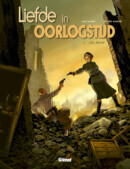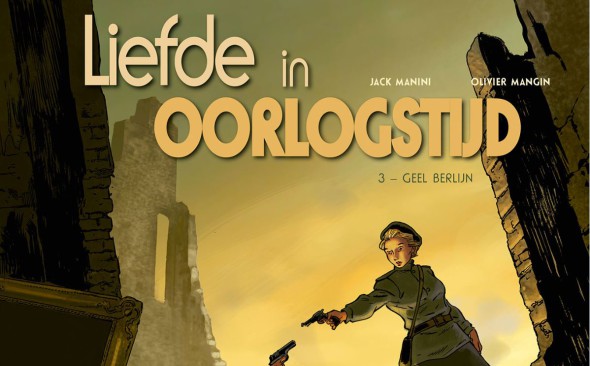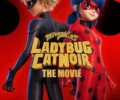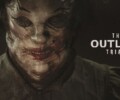
Written by: Jack Manini
Illustrations: Olivier Mangin
Coloring: Bérengère Marquebreucq
Publisher: Glénat
Liefde in Oorlogstijd #3 Geel Berlijn – Comic Book Review
Walter and Natalia used to study together in Russia, where one of their most important teachers was Vassily Kandinsky, the famous painter. They were lovers back then, but when they go to the Bauhaus in Weimar in 1922, things start to change. Fascism is gaining ground, and the two develop different views on the world. Now, more than twenty years later, they meet again, at the end of World War Two.
In this last installment of the trilogy we meet Walter again in Berlin, 1945. He is part of the Monuments, Fine Arts and Archives subcommittee, shortly the Monuments Men, whose task it is to find and protect all monuments of cultural importance. The Germans took a lot of artwork from museums such as the museum Jeu de Paume in Paris. Hermann Göring selected many pieces for his collection, but also Hitler did, to hang in his future museum in Linz. Al of these valuable works of art have been stored in secret locations that were very unlikely to be bombed, but now that the war is coming to an end, Walter has to move fast in order to secure this art, as the Russians are doing the same thing. The Russian Trophy Brigade, led by Natalia, wants to find the art to take it to Stalin, as some sort of compensation for all the sorrow that the Russians went through, while the Americans want to find the art to give it back to its rightful owners. Time is of the essence, but luckily Walter can count on the valuable information of Rose Valland, who used to work at the Jeu de Paume.
Despite this being the third and final installment of the series, the story can be read separate to the other albums. The story itself covers a different time period then the other issues, and the relationship between Walter and Natalia is made clear at the beginning, when Walter explains this to Harry. This way it never feels as if you missed something by not reading the other issues.
The flow of the story is on the slower side, but nonetheless Jack Manini keeps things interesting by switching the time frame quite often, as well as switching between both Walter’s and Natalia’s search for the valuable art. The story may not include that many surprises, but because of the interesting way in which it’s told, as well as the uncommon subject, it feels refreshing and new.
Olivier Mangin opted for illustrations that don’t have that much detail to them, but nonetheless they depict the ruins left by the war quite nicely. When seen from further away, the characters are drawn using just a few strokes, but luckily close-ups do show more detail, which shows emotions better. The paintings that are recovered by either Walter or Natalia have very blurry lines and are not detailed at all, yet they do look quite real at the same time. In any case, they are drawn in a completely different fashion than the rest of the comic book, stressing the fact that they are works of art. Bérengère Marquebreucq’s coloring often shows muted colors which, together with the thick black lines used for the illustrations, give the whole a rather gloomy feel.
Conclusion
Liefde in Oorlogstijd #3 Geel Berlijn is, despite it being yet another war story, a very original insight into a subcommittee most of us will probably never have heard of before. There is not that much real action to be seen, and the story moves rather slowly, yet things still keep being interesting thanks to the different time frames and lovely illustrations. If you’re still looking for an affordable Christmas present, look no further.
Liefde in Oorlogstijd #3 Geel Berlijn - Comic Book Review,1 Comment
Leave a Reply
You must be logged in to post a comment.






[…] a nice reference which will immediately ring a bell for those who read our review on the comic book Geel Berlijn. What makes this album different, is that it is part of a longer running series, and it is mostly […]